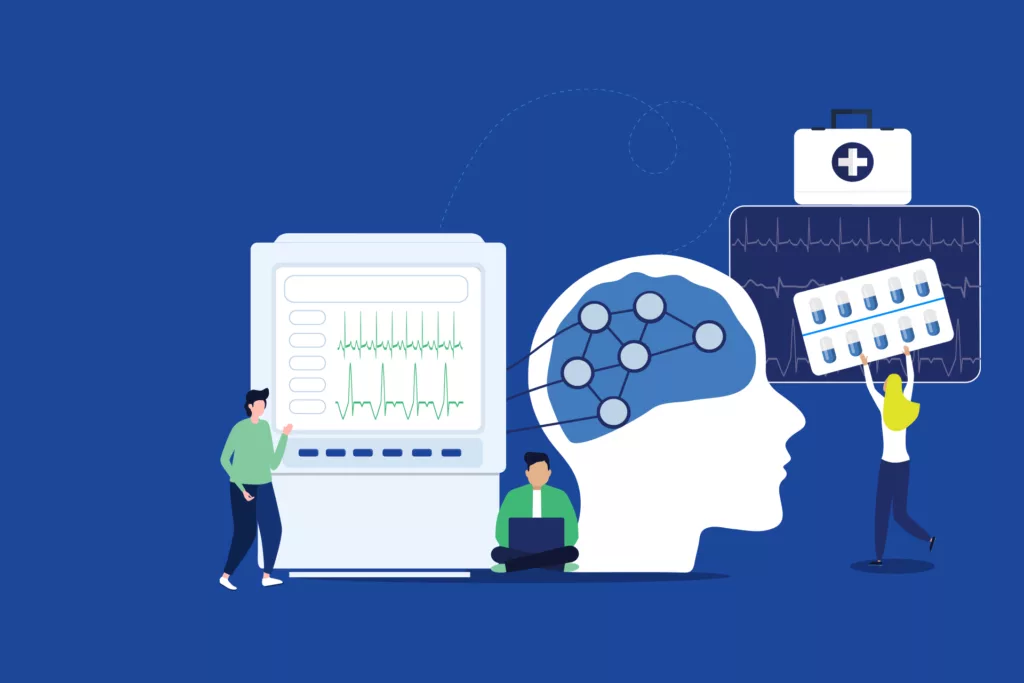Defining the Digital Health Landscape
Digital health has been a trending topic for several years now. Using technology to improve health and wellness is a broad and growing sector. Smartwatches or trackers that can track steps, heart rates, and other health markers are seen everywhere, but digital health goes beyond wearable devices that promote general health. It covers a wide range of applications which include telehealth/telemedicine, electronic health records, and prescription digital therapeutics. This technology has allowed companies to gather large amounts of real-world data to gain incredible insights. Digital health was even more relevant this past year as pandemic fears have driven patients away from doctor visits to telehealth and other digital health technologies to maintain their health.
Digital health technologies span a wide range of uses, from general wellness to medical device applications. There are literally hundreds of thousands of solutions out there, but payers have a hard time determining which ones have clinical value, are user friendly, and have real world positive outcomes. This article will focus on digital therapeutics (DTx), a growing area in the broad and ever-expanding landscape of digital health. We’ll look at some of the products out there as well as regulatory and adoption hurdles manufacturers face.
Overview of Digital Therapeutics
Digital therapeutics are evidence-based therapeutic interventions using software programs to prevent, manage, or treat a broad range of medical disorders or diseases. PDTs (Prescription Digital Therapeutics) are subject to the same levels of evidence and regulatory oversight as prescription drugs. Digital therapeutics must demonstrate product safety, efficacy, quality, patient centricity, privacy, and ongoing clinical impact. They can be used independently or with medications, devices, or other therapies to treat medical orders and diseases. Emerging evidence shows digital therapeutics can improve outcomes in a wide range of conditions, including cancer, ADHD, depression, substance abuse, asthma, schizophrenia, and insomnia. PDTs employ algorithms and data to treat patients using an App on a patient’s mobile phone or tablet device.
It is expected that digital therapeutics may grow into a $14B industry in 6 years1. Let us look into some of the focus areas through a small sample of DTx companies.
Digital Therapeutics Examples
Pear Therapeutics may be considered one of the leaders in the PDT space. Pear was the first company to get a PDT approved by the FDA. There are currently only a handful of PDTs approved by the FDA and half of them are from Pear. Their products focus on medical conditions with a behavioral health component such as substance/opioid use disorders and insomnia. Pear’s app is designed to deliver Cognitive Behavioral Therapy (CBT) to treat these conditions. CBT is a best practice standard that behavioral health providers use for such conditions.
Orexo is a Swedish specialty pharmaceutical company that has a digital therapeutics division. They have a portfolio of digital therapeutics focusing on medical conditions with a behavioral health component such as problematic drinking, opioid use disorder and depression. Like Pear, their platform is based on delivering Cognitive Behavioral Therapy. Orexo’s digital therapy product for depression has been cleared by the FDA for marketing as SAMD (software as a medical device). Their substance/opioid use disorder PDTs are being launched under the Enforcement Policy for Digital Health Devices for Treating Psychiatric Disorders During the COVID19 Public Health Emergency which is an Emergency Use Authorization (EUA).
Hinge Health focuses on a digital musculoskeletal therapy solution that uses sensors combined with one-on-one coaching to be used at home. It’s evidence-based technology is shown to reduce pain and avoid surgeries. According to a study published in JAMA in 2016, musculoskeletal disorders collectively resulted in $380.9B of healthcare spend. Having a digital solution may not only cut costs but help cut down on pain medications.
Other companies with FDA approved PDTs (Prescription Digital Therapeutics) are:
- Akili, which developed a treatment for ADHD (Attention-Deficit/Hyperactivity Disorder) delivered through a video game.
- Nightware, which developed a PDT using an Apple Watch to help people suffering from traumatic nightmares get a more restful night’s sleep.
- Mahana Therapeutics, which developed a PDT to treat IBS (Irritable Bowel Syndrome).
Challenges Faced by Prescription Digital Therapeutics
Along with the potential value of digital therapeutics comes certain strategic challenges. Digital therapeutics provides a new modality that could provide new health benefits for certain patient populations. They can work alone or in conjunction with existing drugs and therapies to enhance treatments, improve adherence, and generate a ton of real-world patient data. However, digital therapeutics lack established market dynamics, reimbursement and regulatory pathways that currently exist for conventional prescription drugs. We will look at some of the dynamics that will impact the development of digital therapeutics.
Patient and Provider Adoption
Digital therapeutics come in different varieties, which lead to different strategies to drive adoption by patients and providers. Privacy and security is of the utmost importance to patients – especially considering these PDTs contain personal health data. With the enormous amount of data collected from these devices, patients would want assurance their information is safe and private.
Educating patients and providers on the value of PDTs and how it differs from other digital health products may help in the adoption of digital therapeutics. Healthcare is driven by clinical evidence. Fitness apps and wearable devices promote general wellness but not with the same level of clinical evidence as a PDT. A key differentiator is that PDT companies needs to provide clinical evidence to gain regulatory approval. FDA approval shows the PDT product’s claim of safety and effectiveness are supported by the same high-quality, peer-reviewed, clinical evidence typical of prescription drugs.
Offering meaningful incentives may help drive patient adoption. Some companies offer financial incentives to patients to use their app in the form of credits or gift cards; however, not all incentives may need to be financial. Studies have shown that game-play elements may motivate individuals to adhere to the program. Consistent, positive clinical outcomes is another strong incentive that may drive increased user adoption. Incentive strategies may also differ by disease condition.
Regulatory Review of Digital Therapies
Digital therapies present challenges for the regulators charged with approving them. FDA regulatory review for digital therapeutics currently works through pathways designed for traditional medical devices which is not suited for the faster development, design, and validation used for SAMD (software as a medical device) products. Because of this, digital therapeutics companies have tried other pathways to seek FDA guidance and more efficient regulatory review.
To address this, the FDA established the Digital Health Innovation Action Plan which seeks to foster digital health innovation while protecting and promoting public health. One of the primary goals is to establish a streamlined review process for digital health products. The Action Plan introduced the FDA’s Digital Health Software Precertification Program, a pilot program currently testing a new developer-focused pathway for digital health products through which digital therapeutics could benefit from more predictable and streamlined regulatory review. Understanding how slow and inefficient it would be to approve every software release for a PDT, the FDA uses this program to approve the developer instead. Through this program, companies would request an FDA precertification assessment. If precertification is granted, proof of safety and efficacy would be reviewed on an accelerated basis or during the post-market product lifecycle. Companies with precertification would be able to develop their digital products much more quickly and efficiently than companies going through current regulatory pathways.
Reimbursement
Digital therapeutics are not commonly found in existing formularies today. As this sector grows, payers will need to find ways to provide coverage and reimbursement. Value based contracting may help adoption as payers would receive rebates if their product were not used or if it did not work as intended. Novel reimbursement models may emerge to capture the data-driven value of digital treatments.
Payers will value a DTx product if given proof it reduces healthcare costs particularly by reducing complications or replacing office visits/surgeries with automated software, coaching, or virtual visits. Examples of companies attempting to demonstrate this are Pear Therapeutics which aims to shift care from the clinic to a cheaper setting and Hinge Health’s goals of reducing pain and avoiding costly surgeries.
Conclusion
Digital therapeutics are being developed at an unprecedented pace. Additional diseases will be addressed by this new technology as entrepreneurs leverage ideas from different medical disciplines to solve more complex medical problems. Patients and providers may become more comfortable with digital therapeutics as product design improves and evidence grows. Payers will need to understand the science and value behind each product to make the right decisions for their members and to benefit from the coming waves of innovation. Digital therapeutics is more than just tracking your steps….
References
- 2021. Digital Therapeutics: DTx. [online] Available at: <https://mwferro.medium.com/digital-therapeutics-michael-ferro-artificial-intelligence-in-healthcare-ff744bbbc5c> [Accessed 11 March 2021].
- org. 2021. Digital Therapeutics Definition and Core Principles. [online] Available at: <https://dtxalliance.org/wp-content/uploads/2021/01/DTA_DTx-Definition-and-Core-Principles.pdf> [Accessed 11 March 2021].
- gov. 2021. Digital Health Innovation Action Plan. [online] Available at: <https://www.fda.gov/media/106331/download> [Accessed 12 March 2021]







